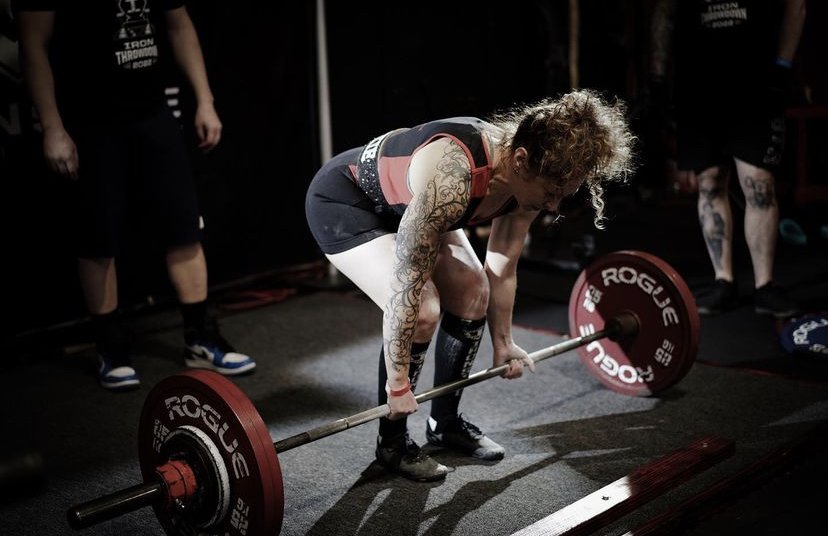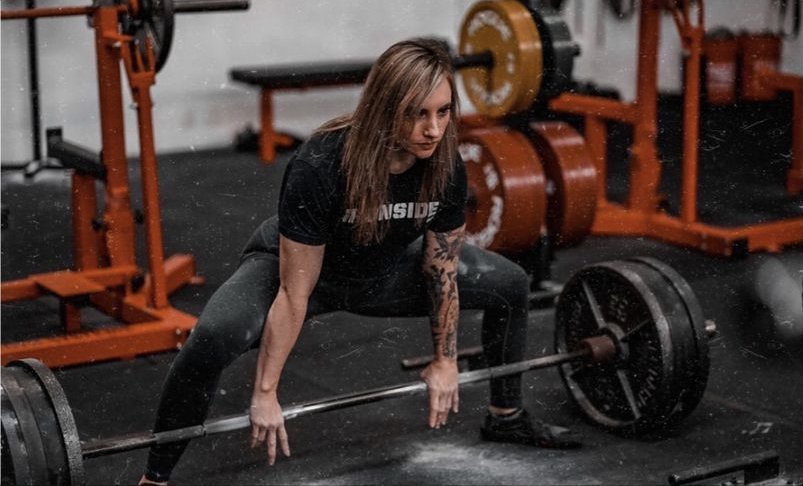sumo vs. conventional: which one should you train?
The great debate. Sumo vs. Conventional.
Which lift is better?
Is conventional the only “real” deadlift?
Is sumo really cheating?
Which one will make you stronger in the long run?
As with many things, the answers to these questions are far more nuanced than Instagram gym-bro comments will argue.
Simply put, both deadlifts are valid, and both deadlifts can benefit you. Why stay committed to one when you can be in an open relationship with both?
There are some key differences and key advantages to each. Sumo AND Conventional are tools in your toolbox to achieve a gnarly deadlift. Stay tuned to learn more.
Should you decide between the two?
First of all, should you choose “your” deadlift stance and stick with it forever?
You may find yourself stronger in one position over the other. However, a common issue among many lifters is choosing the variation they feel most comfortable with, and neglecting the opposite stance.
This is de-railing your strength progress. Training both will benefit you far more than training either alone.
Your sumo will help your conventional.
Your conventional will help your sumo.
And your preferences can change over time. What works best for you to start may not be what you benefit most from in the long run, and that’s okay.
That said, most individuals will find a stance that feels best to them, allows them to push more weight, etc. It does take some trial and error, and everyone’s reasoning may be different. Determining your stance is up to individual strength deficits, anatomy, leverages, bodyweight, musculature, etc. Many factors go into it; however- there are some general patterns we can observe.
Sumo may be a better option for you if:
-You have a weaker back, or struggle with maintaining spinal position when deadlifting
-(Potentially) if you have shorter arms and/or longer legs
-Your quads & hips are stronger than your back
-You have adequate mobility for external rotation
Conventional may be your preferred stance if:
-You have a hip weakness or mobility issue
-You have long arms and/or shorter legs
-You have a great deal of back strength
-You're strongest in sagittal plane hip movements (moving forward and back) and struggle with external rotation
Evidently, these are very vague suggestions for deciphering between the two. The truth is: anatomy, past injury, and strengths/weaknesses will not necessarily define your deadlift stance. Athletes of many different sizes, backgrounds, strength levels, past injuries, joint mobilities, etc., can pull either.
You truly *have* to experiment and find what allows you to perform at your best & feel your healthiest.
My recommendation? Start with a conventional deadlift- unless you have a condition preventing you from doing so, learn that movement, then begin incorporating sumo. Train both for a few months, and get a feel for which one is your favorite.
Conventional is usually easiest to learn as a beginner- sumo is a more technical lift- but once you start pulling both, you’ll begin leaning toward one.
And even as an advanced athlete, incorporate your opposite stance deadlift-whether it be as a secondary movement, in your off-season, in a training cycle, etc. It could be the secret to that next deadlift PR.
2. Is sumo cheating?
Watch any video of a female Powerlifter pulling sumo and guarantee you’ll see dozens of comments like, “sumo doesn’t count” and, “do a real deadlift.”
This statement has been beaten like a dead horse by now, yet it’s undeniably false.
Sumo's validity isn’t the main topic of the article- but; let’s briefly discuss why sumo is in fact, not cheating.
The reasoning behind this claim is that “the range of motion is shorter.” While this is true, the bar distance is usually 20-25% less range in a Sumo vs. Conventional deadlift, there’s more to the topic than this.
Remember, lifters don’t miss a lift because they were too weak throughout the entire range of motion.
They miss a lift because they were too weak through their weakest part of the movement.
When pulling Sumo, you’re at a less advantageous position off the floor. Getting the bar off the ground is pretty hard. While the rest of the lift may be “easier” and “less range of motion,” if you struggle most getting it off the ground, it doesn’t matter.
With this deadlift stance, you’re moving in different planes of motion.
If one were to look at the pull from a side view, the hips do travel a greater distance to meet the bar in a Conventional-style deadlift.
Yet, this ignores the other aspect of Sumo: moving in the frontal plane. The hips not only perform extension, but they are also in an abducted position- so you’re basically exerting force in different directions (front-to-back and side-to-side) and using multiple muscle groups.
That’s what it comes down to: In sumo, different muscle groups are targeted, and the weakest points of the lift are changed. Both variations are equally valid in competition across every single Powerlifting federation. And in the world of Powerlifting, we see a great number of lifters pulling each style. In large organizations such as the IPF, the split between stances is close to 50/50. If sumo was the easier lift, wouldn’t everyone be doing it? Why would so many lifters be able to pull more Conventional? It doesn’t make sense.
I rest my case. Sumo is not cheating.
It’s just a variation.
3. What are the benefits/differences between each?
Now, let’s touch on some key aspects of each lift.
Conventional-
With the conventional deadlift, the feet are usually between shoulder and hip-width apart, and the hands rest outside of the feet. Compared to Sumo, the hips are further away from the bar, the shins are nearly vertical, the knees are less flexed, and the torso is more bent over.
-Weakest point: Usually off the floor or right below the knee. (Note: This obviously depends on the person, we’re just speaking generally here).
-Main muscle groups targeted: Spinal erectors, glutes, hamstrings (also upper back, core, quads, etc.)
-Usually simpler to learn for Beginners, builds a solid foundation for deadlifting, can be more intuitive
-Can place more stress on the lower back, can be more difficult to maintain a neutral spine
-May be your strongest lift
Sumo-
With the sumo deadlift, the feet can be anywhere from just wider than hip-width to the toes reaching the ends of the bar. There’s a lot more variety here. The feet are generally pointed outward, the knees are pushed out, the hips are closer to the barbell, and the torso is more vertical.
Weakest point: Generally off the floor- issues with lockout strength may be due to faulty positioning
-Main muscle groups targeted: Hips, quads, glutes, (also upper back, core, hamstrings, etc.)
-Can be more comfortable for some or more awkward/unnatural for others
-Can place greater stress on the hips, requires more mobility
-May be your strongest lift
Clearly, there are some key technical differences between the two. With any deadlift, setup, positioning, and proficiency are key.
Neither is inherently better than the other. There are no significant pros to either deadlift across the board for everyone. Focus on mastering technique in each stance, no matter your preference. The weak points, targeted muscles, and form in the two deadlifts are slightly altered due to the mechanics.
4. How does each variation carry over to the other?
As a conventional puller, sumo will help build your deadlift.
As a sumo puller, conventional will help build your deadlift.
We all want to pull big weights. So, incorporate your opposite stance to train you for that goal.
As a sumo puller, conventional can help you:
-develop your back strength & overall posterior chain
-maintain positioning off the floor, reinforce the proper spinal position
-train patterns of the hip hinge that may be neglected
-add a new stimulus to your training, helping you break plateaus
-improve starting position
-train mid-range strength
As a conventional puller, sumo can help you:
-develop quad & hip strength
-improve your strength off the floor, reinforce “pushing” vs. “pulling”
-mitigate some lower back fatigue from high training volumes
-add a new stimulus to your training, helping you break plateaus
-train *patience* off the floor
Essentially, each deadlift complements the other, filling gaps that may be present in your training from only performing one pulling style. Variation itself is beneficial-as doing the exact same lifts over and over can lead to staleness and stagnation, and when that variation is targeted, like performing an opposite stance deadlift, you’re set up for success to continue reaching.
Use your opposite deadlift stance in your off-season, as back-off sets, or as a secondary pull day for best results.
Sumo and conventional: the hot debate. The truth is, you don’t have to marry one and avoid the other entirely. Instead, incorporating BOTH deadlifts in your training will allow you to be great at one and good at the other. Each deadlift is very different- from a technical, muscular, and strength perspective, yet they complement each other. While you may prefer one of the two, both variations should be included over time.
We love ALL the deadlifts. Train the two to get the best of both worlds.




